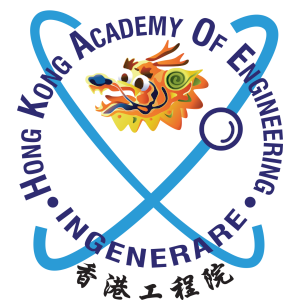Enhancing Policy on Building Maintenance — Solving the Residential Seepage Problem
- Project In-charge: Prof. CHOI, Yu Leuk
- Project Title: “Enhancing Policy on Building Maintenance — Solving the Residential Seepage Problem”
- Funding Body: Central Policy Unit
Project Brief Note explains the background and requirements of this study (as updated on 10 Feb 2015)
Brief Note on Central Policy Unit (CPU)-Funded Project (updated 20150328)
“Enhancing Policy on Building Maintenance—Solving the Residential Seepage Problem”
The project is undertaken by Hong Kong Academy of Engineering Sciences under the Public Policy Research Funding Scheme (PPR) of CPU. This note explains the background and requirements of this study.
Background
The PPR Project is a continuation of the study of a complicated seepage case. Seepage was seen dripping at the same locations of the ceiling of the complainant’s flat in the 3 periods of December 2006 to September 2009, January to July 2010, and January 2013 to March 2014. Throughout the years 2006 to 2014, the complainant alleged the seepage was sourced at the floor slab immediately above the seepage exit points in his flat.
Investigations were carried out using both the current practice and a new approach. 3 major findings of this case study are relevant to this Project.
First, the current practice cannot find the seepage source. During each of the first 2 incidents, 2 Ponding tests (PT) were conducted on the alleged floor: in March 2007, June 2009; and in March 2010, June 2010. The results alternate between “positive” and “negative” in each incident. The alleged floor slab was kept dry throughout the period before the first PT to 2014. There was no significant alteration to the floor slab until 2014.
Second, the new approach of moisture scanning successfully located the seepage source but the stake holders were reluctant or refused to acknowledge the findings. The seepage was found to be sourced at leakage in a section of the vertical sewer pipe which passes 3 consecutive floors above the alleged floor. Investigation by the new method could not be performed on the 3 floors due to non-availability of access. The alleged floor slab was reconstructed in April 2014.
Third, carefully conducted dye tests during the third incident showed that when seepage was intruding both the alleged floor slab and the complainant’s ceiling, dye applied at the first site was transported to the lower second site by diffusion even when no seepage flow path existed between the two sites. Preliminary laboratory experiments have demonstrated this phenomenon in a model of the two sites, as is expected from the classical mass transport equations.
Based on these findings, the PPR study proposes 3 parts of work to enhance the policy on residential seepage investigation. The objective is to produce adequate public education materials to enable government to return to the normal policy that building maintenance including seepage investigation is the responsibility of the building owners.
Part A of the Study Project comprises new field investigations to further validate and refine the new method of locating seepage source by moisture scanning, 3 difficult cases will be selected for the field investigations. The basis of selection will be long standing history or unreliable previous test results, similar to the original study case.
The deliverables from the end result of Part A will be a set of detailed technical guideline for building professionals to use the new method in seepage investigation.
Part B of the Project comprises laboratory experiments to demonstrate the following two points in order to help remove common misconceptions and bias of the general public.:
- Dye tests may give false indication of water source when seepage intrudes both the test site and the seepage site.
- A very long dye transport time indicates molecular diffusion rather than water flow.
An experiment on the prototype model has confirmed the first point. The experimental investigations will take into account the preliminary experiments.
Both the experiments and the field investigations will be video recorded and edited for use as part of the public education materials.
Part C of the Project comprises integrating the results of Parts A and B together with other relevant materials to produce a set of public education materials on Residential Seepage Investigation. This set will address the issue at 3 levels.
- For the general public to gain the correct and better understanding of the seepage problem.
- For owners to decide whether to conduct simple tests themselves or to engage consultants when they have a seepage problem.
- For building professionals to be provided with the latest technique and procedures of using the new method of moisture scanning in residential seepage investigations
———————–END——————————
Attachment Items:
1. Project Note :- A Brief Note in Chinese and a Summary of Final Report (as updated on 12 Nov 2015)
2. Presentation PPT at the 2016 Building Surveying Conference organized by the Hong Kong Institute of Surveyors on 15 Oct 2016 (as updated on 6 Jan 2017)

